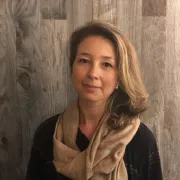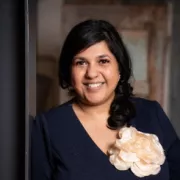Catalyzing Women-Focused FinTech / Webinar Recording

The growth of FinTech and the stagnancy of the gender gap in financial inclusion has brought about new and creative approaches to using technology to improve women’s access to financial services. We’re also seeing more financial and technical support being offered to FinTechs to focus on this subject. In this webinar, we talk to two organizations - DFS Lab and UNCDF - who have recently organized competitions around women-focused FinTech, and discuss the sustainability, expectation and stimulus of such initiatives.
ADDITIONAL RESOURCES:
- RFA for Sprint4Women, with design details
- A Buck Short: What Financial Diaries Tell Us About Building Financial Services That Matter to Low-Income Women
- Blog: UNCDF Zambia Launches Sprint4Women Zambia – Digital Financial Services Designed for Women
OVERFLOW QUESTIONS FROM THE Q&A SESSION:
-
What were some interesting innovations you saw within the applications you received?
(Stephen) A few examples: a company that allowed friends to pay for services in case a female customer did not want a digital record given family dynamics. Many of the innovations revolved around translating financial goals into life goals, which was critical to show value. Finally, our runner-up Pezesha shifted from a direct-to-consumer product to one that is trying to build the infrastructure for informed digital credit – a very innovative but also prescient move.
-
A prize like F3 or a UNCDF Sprint is great for FinTechs who have achieved a level of maturity about women-centricity in product/impact, and also who may be women-led or -founded. Perhaps there are tech startups out there who could move the needle on their value proposition and company culture for women...but they're not there yet. What resources are there – from this competition, or from elsewhere – to help them get there? Lessons learned, guiding principles, toolkits, checklists..?
Nandini: I’ll have to disagree here, the Sprint showed us that there were many companies that were not very sophisticated nor “reached a level of maturity” generally, but understood that they wanted more customers, and there were a large number of unserved or underserved women out there that could help them address their business key performance indicator (more active customers, lowering dormancy). I also think we, as practitioners in this field and market facilitators, should respect that financial service provider colleagues often have bandwidth challenges, so I would limit how much “training material” we give them, unless they ask and actively want more. My top reading list to understand how to design for women in emerging markets include: A Buck Short by Julie Zollman and Caitlin Sanford, and a country-specific report, like UNCDF’s PoWER diagnostic or like our UNCDF Zambia Labour Pains: Financial Lives of Zambian Mothers
-
Stephen, can you give an indication of the scale of operations of the winners in terms of the number of women currently serviced?
On average, our applicant companies served 16,800 customers of whom, 68% were female.
-
Where do you see the role of your respective organizations and similar initiatives regarding women-led and/or women-focused informal businesses? Eg. helping them to formalize and scale, improving access to finance etc.?
(Nandini) With the rise of COVID19, UNCDF's focus on the impact of women, especially women-owed and women-focused businesses is even higher than before. We already have had several initiatives in several countries focused on incubating and increasing access to finance for women-owned and focused SMEs. Connecting them to e-commerce platforms, increasing their technical skills, relationships to those in the digital finance space, as well as increasing access to finance through traditional and innovative means are all on the list. These will be boosted and be taking a more focused approach. More to share shortly!
-
For the finalists, how did they fare on measuring impact- both breadth and depth?
(Nandini) Because finalists were part of an official procurement, I cannot share how they did individually on their evaluations. As per the RFA, they were judged on the following categories – see below. Here’s our aggregated analysis on their performance: 1. Generally, finalists did a great job showing how their products would suit the needs of women. 2. The finalists did well reflecting on the design sprint and how their products and product design process would change because of their experience with customers. 3. In general, despite receiving the items they were to present on beforehand and extensive coaching from our experts, there was difficulty in clearly explaining their ability to reach their scaled numbers, or what the roadmap would be to get them there.
This competition was about increasing the number of active customers, most of whom should be women. That in and of itself would be impactful, but we did not set out an expectation for them to measure “impact” on women, beyond account registration and usage. We will know more as they report on their data in the next quarter
-
Were there any challenges encountered by the projects in engaging women for the design process (social norms, mobility etc.) and how did you overcome these challenges?
Nandini: The three finalists already had existing relationships with their target groups so it was not a challenge for us. We insisted the design sprints be in non-urban locations, so we knew they were testing the product for women who were not always served by products developed and tested in the capital, Lusaka. The women who were engaged in the design process were reached in their communities, through their existing social gathering activities or patterns e.g., VSL groups, chilimba groups. There were no conflicts with mobility nor social norms. We met them on the days that they had a meeting and for JUMO it was market days and we could meet them in the places where operate. As far as we know, there were no challenges in engaging women customers. This is not always the case, especially if there are no pre-existing relationships with communities.
-
Can you give examples of how the different FinTechs segment among female customers and focus on the needs of lower-income women specifically or is it assumed in their business model that this is the target audience?
(Nandini): I will focus on the 3 finalists here, though we had 14-16 financial institutions show interest in multiple “women segments”.
Fenix: Wanted to focus on engaging informal savings groups (most of which are women majority) and offer them a “bonus” back to the group if everyone in the group repays their loans on time for pay as you go energy products.
Hobbiton: Was very good about engaging specific women's groups in non-urban locations to better understand their needs and educate about the product.
Jumo: Most marketing of this bundled savings and loans product is done through MNO partners (in this case MTN), and of course this loans product is based on mobile money transaction history. Jumo also did some of their own marketing for this product. Customers are, of course, a wide range, but in this competition, a focus was on non-urban women.
-
Could you speak a bit more about how you judged an applicant's prioritization of gender equality in their business model/company culture? Is it about internal policies? Gender balance in staff/leadership?
(Stephen) For company culture, we looked at how many of their executive leadership and/or boards included women
-
Have you noticed any early evidence that these organizations might make internal changes to become more gender-sensitive as organizations as well? Assuming that deploying gender-sensitive products would also require gender-sensitive distribution channels, a more gender-balanced customer-facing staff, gender-sensitive communications/marketing materials, etc.
(Nandini) As answered in the webinar, we try to take a very practical approach here. Our goal, as is the goal of the businesses we are partnering with, is to try to increase their active customer base. So, the introduction, or deepening of their exposure/experience with human-centric design, especially in creating products that solve real problems for real women, naturally lends itself to deploying gender-sensitive products in a gender-sensitive distribution channel, etc. But we wouldn’t necessarily call it that. We’d just say it is more “human-centric”. And the companies themselves may not call it that – they may just say they are doing business smarter, and better. The language used is less important than the actions.
About this event

Catherine Highet
Catherine Highet leads the Technology working group at FinEquity. Prior to this role, she worked with the GSMA Connected Women program and FHI 360, focusing on digital inclusion activities, including DFS, digital identity and gender equality. Catherine has also consulted for several digital development partners in the public and private sector including IREX, Mozilla and Souktel.

Nandini Harihareswara
Nandini Harihareswara is the Lead, Women’s Economic Empowerment for the United Nations Capital Development Fund’s (UNCDF) Inclusive Digital Economies Division. Formerly, she served as the Digital Finance Regional Technical Specialist, responsible for the creation & implementation of the UNCDF Digital Economy Strategy in Zambia and Malawi. She worked from 2015-2019 to advancing digital financial inclusion in partnership with Mobile Network Operators, Banks, FinTechs, Central Banks, Telco Regulators and others. She was the architect for the Inclusive Digital Economies Women’s Economic Empowerment strategy and the UNCDF Zambia Sprint4Women Competition.

Stephen Deng
Stephen is a partner at DFS Lab, an investment and advisory firm focused on the future of African commerce. He has spent time advising various clients on the growth of fintech and ecommerce in frontier markets such as Africa, China, and Indonesia. Previously, he worked on the emerging technology strategy at the Gates Foundation and served as a tech consultant in Silicon Valley, specializing in the telecom and consumer tech industries.